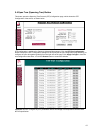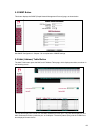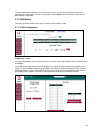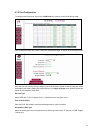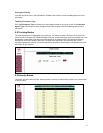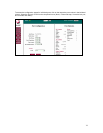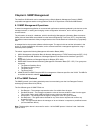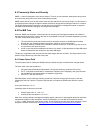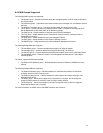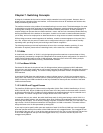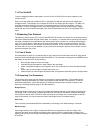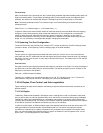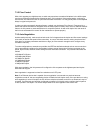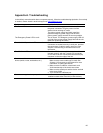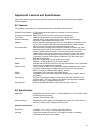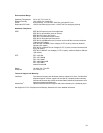75
6.4.2 MIB Groups Supported
The following MIB-II groups are supported:
• The System group – General information about the managed system, such as contact information
and system name
• The Interfaces group – Information about each interface in the managed unit, and statistics for that
interface
• The Address Translation group – This group is deprecated, and should not be used
• The IP group – Contains counters for Internet Protocol Traffic. It includes as a sub-group the IP
Net-to-Media table, which tracks MAC-to-IP address mappings
• The ICMP group – Keeps statistics for Internet Control Protocol datagrams
• The TCP group – Keeps statistics for the Transmission Control Protocol, including a table of
established connections
• The UDP group – Keeps statistics for the User Datagram Protocol
• The EGP group – Keeps statistics on the Exterior Gateway Protocol
• The SNMP group – Keeps statistics on the Simple Network Management Protocol
The following Bridge MIBs are supported:
• The dot1dBase group – Contains the objects that apply to all types of bridges
• The dot1dStp group – Contains objects to manage the Spanning Tree Protocol
• The dot1dTp group – Contains objects that describe the bridge’s function as a transparent bridge
• The dot1dStatic group – Allows the creation and management of static entries in the bridge’s
forwarding table
The switch supports the Ethernet-like MIB:
• The Ethernet-like Statistics group – Records statistics relevant to Ethernet’s CSMA/CD access
method
The following RMON MIBs are supported:
• The Ethernet Statistics group – Records statistics for each Ethernet interface on the switch,
including records of frame sizes received
• The Ethernet History group – Collects statistics for each interface in buckets covering a user-
selectable time period
• The Alarm group – Allows the manager to set a threshold on a counter, and to configure a
response if the threshold is crossed in either a rising or falling direction
• The Event group – Allows the manager to configure a response when an alarm is triggered.
Responses include a trap or log entry
For more information on SNMP, refer to the SNMP software user’s manual.



